If you’re serious about your BMX riding, then you can’t help being serious about your handlebars. Together with your saddle and pedals, they’re your only points of contact with the bike, so you can’t afford to leave anything to chance with them.
With a tough, proper-fitting pair of handlebars, a good rider can safely do everything from bunny hops to tail whips. A poorly constructed, ill-fitting pair, however, can result in anything from persistent neck and back pain, to a debilitating injury due to component failure.
You want handlebars that are well constructed, and fit your body and riding style correctly. Luckily, there are hundreds of BMX-type handlebars out there to choose from, but which one is the right one? Once you’re familiar with the nuts and bolts of handlebar design, it’s not difficult to narrow the selection down to the one that you’re going to be happy with.
Building BMX Bars to Last
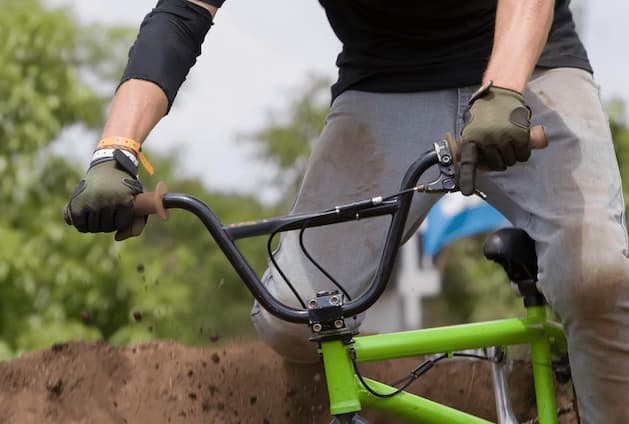
Although there are a lot of calculations that go into making better handlebars, safety and comfort are always at the forefront of their design. When you buy a new pair of top-quality BMX handlebars, you expect them to be able to absorb anything that you’re capable of dishing out. And that’s why everything from the way they enable you to position your hands and arms to the type and amount of material they’re made from has to be factored in.
Even the differences between racer and cruiser riding styles, and the handlebar’s looks play a role in their design. These points all add up, however, to a sturdy, long-lasting handlebar that you can get years of high-flying use out of; and everything begins with deciding whether you prefer one that’s made from 2 or 4 pieces.
2 and 4-piece BMX Bars
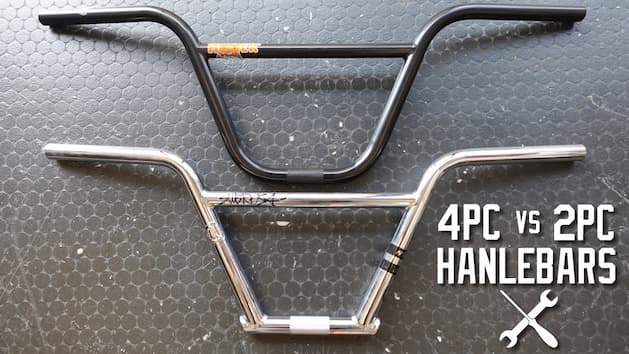
Classically inspired, 2 piece handlebars are constructed from a single section of U-shaped tubing with an independent crossbar support welded between its uprights for added strengthening. These are the good-looking, minimalist styled BMX bars that’ll never grow old and are known for their simple, but functional benefits.
- Flexibility. A single U-tube section isn’t rigid and does a great job of absorbing hard impacts.
- Strength. With just a bare minimum of pieces, there are fewer stress points and less opportunities for breakage.
- Low weight. Without the weight of additional welding material, 2 piece bars don’t weigh much.
On the other hand, 4-piece handlebars do away with the single U-tube in favor of 2 upright tubes that are joined by the independent crossbar support along with a lower crossmember support. Although they ordinarily cost a bit more than 2 piece models, these bars ooze garage-built appeal, are extremely popular with cruisers and freestylers, and also have their own core of benefits.
- Rigidity. With the added welding and hardened reinforcement, 4 piece bars aren’t prone to twisting or bend.
- Variety. They’re easier to manufacture and can be built in an almost limitless range of upright tube variations.
- Clearance. The ability to form a steeper upright angle at the bottom of the bar allows greater knee clearance.
While there may be times when one construction type would genuinely be favored over another (think knee clearance), the choice between 2 and 4 piece bars is almost entirely a matter of preference. It’s in the geometry of your BMX bike handlebars that you’ll find where the most noticeable differences are made in how your ride feels, and there are a handful of dimensions involved that you’ll want to pay close attention to.
Handlebar Geometry
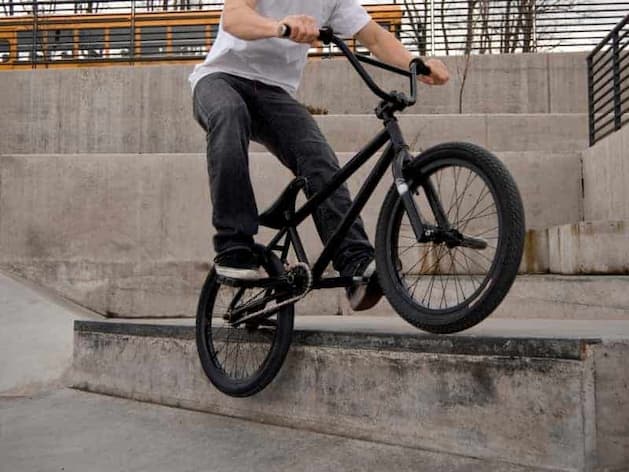
4 parameters have a direct effect on handlebar geometry. You want to keep in mind, however, that no one parameter takes precedence over another, and there aren’t any perfect combinations of parameters.
A rider’s height, arm length, the rise and length of the bike’s stem (the clamp that holds the handlebars) and even the frame’s specs can alter the ideal geometry for what handlebars should be. And that’s why the best way to size up a new pair of handlebars for your BMX is going to be by measuring the parameters of the bars that are already on it, and identifying where you would want them to feel better.
Rise
This is the overall height of the handlebar from the bottom of the lower crossmember to the highest point of the handgrips. New handlebar rises can vary from 5” up to 10.5“, but 8” – 8.5” is generally regarded as normal.
Width
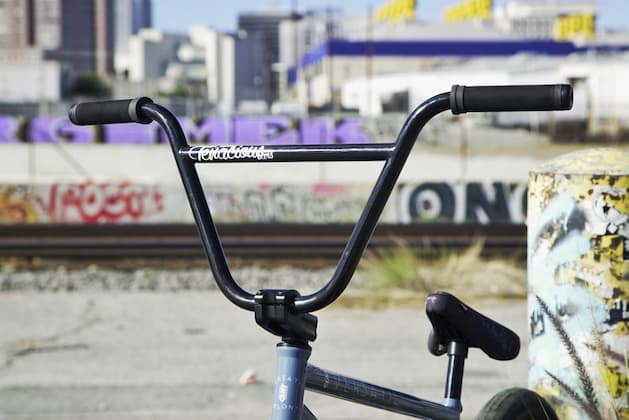
This is the distance from the tip of one handgrip to the other. Although new handlebar widths typically sit in the range of 27” – 30”, this generally isn’t a very important parameter. Wider bars make controlling the bike easier, but it’s not uncommon for riders to cut BMX cruiser handlebars down almost to make them easier to spin.
Upsweep
This is the upward angle of the handgrips from a perfectly horizontal, 0° position. This is probably the most critical parameter, and bars ordinarily won’t go beyond 2° – 4° deflection because of wrist discomfort.
Backsweep
This is the rearward angle of the handgrips which, when measured off the line of the centre crossbar, puts 0° perfectly horizontal. This is another parameter that’s hugely dependent on personal preference and comfort, with most new handlebars ranging between 10° – 13° deflection.
Durable Handlebar Material
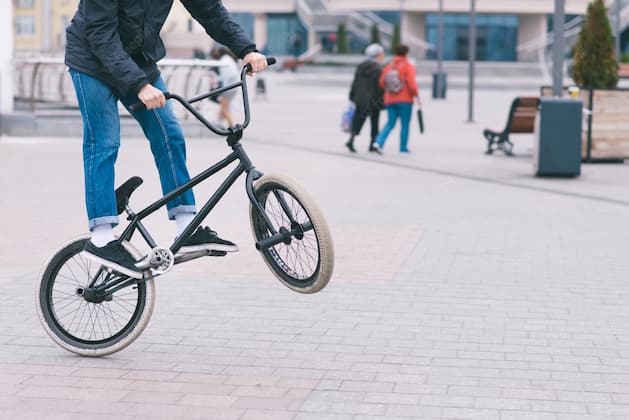
Handlebar materials are the final component for both comfort and safety, and the 2 most commonly used metals are 4130 Chromoly and high tensile (Hiten) steel. Both can take significant amounts of pounding, are heat treatable for extra hardness, and can be coated in a range of colour finishes, but Chromoly is both inherently lighter and stronger than Hiten.
That means if you’re doing lots of high-impact tricks, new Chromoly BMX cruiser handlebars are the way you’re going to want to go. Additionally, by investing in handlebars that have been butted – relieved of excess material from areas where extra thickness isn’t needed – it’s possible to shave off up to 2kg of unwanted weight.
That’s 2kg less resistant to worry about when you’re trying to do a barspin or build up the speed to make a quick jump. And yes, it will make a big difference.
The Final Word
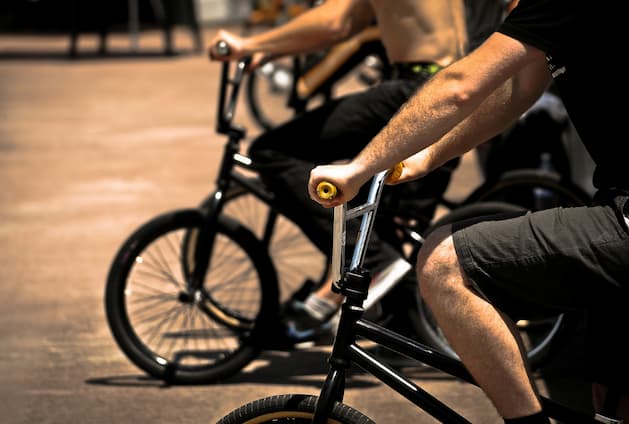
At the end of the day, there could be any number of reasons for wanting to change your handlebars. If you’ve decided to change your riding style, you’ve been feeling wrist pain when you ride, or your old bars finally cracked, then getting a new pair only makes sense. What you don’t want to do though, is get a pair that isn’t right for you.
Buying a new pair of BMX handlebars isn’t rocket science, but you need to know precisely what you’re looking at, and when you’re looking at it. There are a lot of handlebars out there to choose from, and a knowledgeable BMX retailer will help you make the right choice so that you don’t leave anything to chance.


